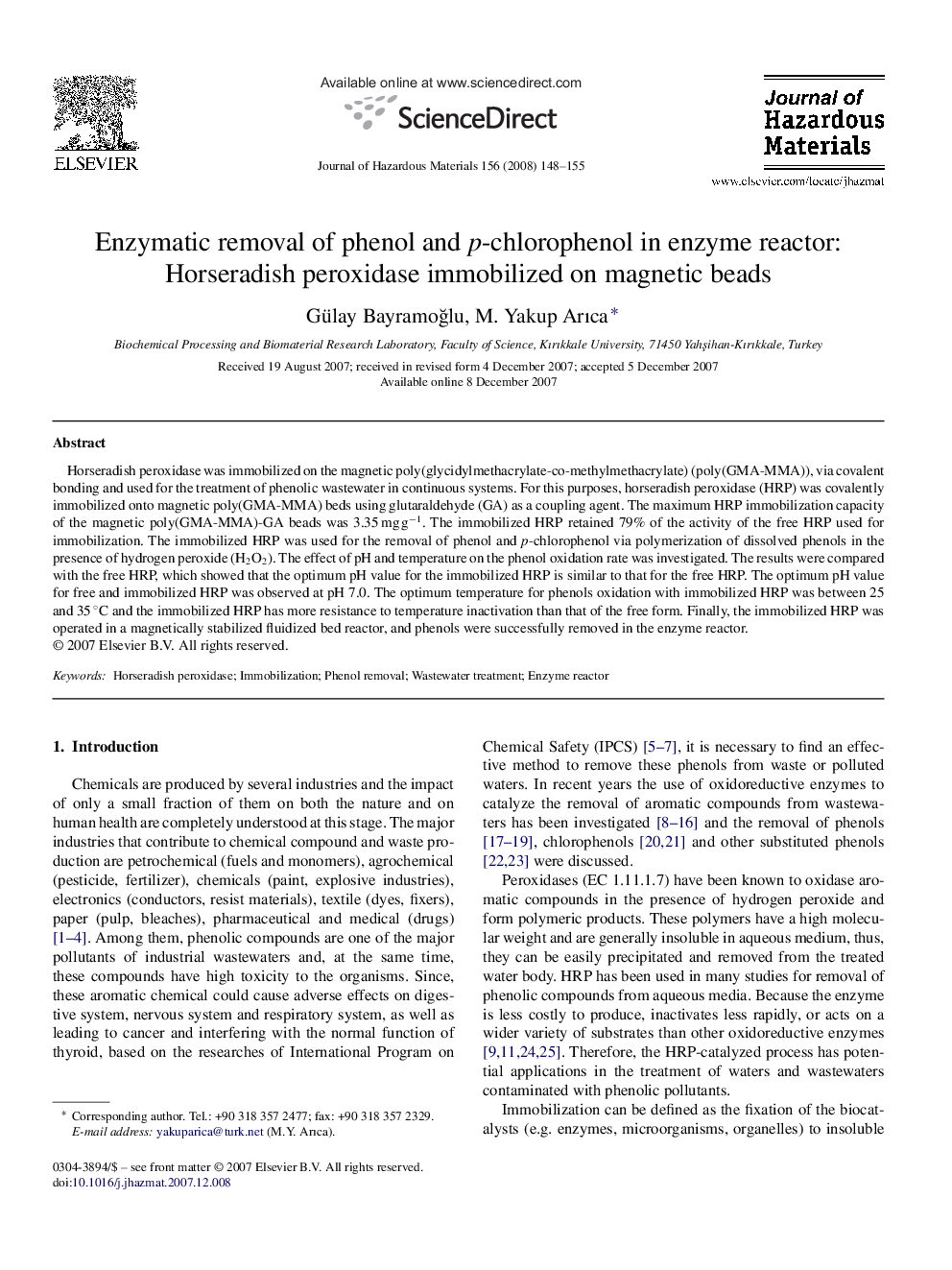| Article ID | Journal | Published Year | Pages | File Type |
|---|---|---|---|---|
| 583223 | Journal of Hazardous Materials | 2008 | 8 Pages |
Abstract
Horseradish peroxidase was immobilized on the magnetic poly(glycidylmethacrylate-co-methylmethacrylate) (poly(GMA-MMA)), via covalent bonding and used for the treatment of phenolic wastewater in continuous systems. For this purposes, horseradish peroxidase (HRP) was covalently immobilized onto magnetic poly(GMA-MMA) beds using glutaraldehyde (GA) as a coupling agent. The maximum HRP immobilization capacity of the magnetic poly(GMA-MMA)-GA beads was 3.35 mg gâ1. The immobilized HRP retained 79% of the activity of the free HRP used for immobilization. The immobilized HRP was used for the removal of phenol and p-chlorophenol via polymerization of dissolved phenols in the presence of hydrogen peroxide (H2O2). The effect of pH and temperature on the phenol oxidation rate was investigated. The results were compared with the free HRP, which showed that the optimum pH value for the immobilized HRP is similar to that for the free HRP. The optimum pH value for free and immobilized HRP was observed at pH 7.0. The optimum temperature for phenols oxidation with immobilized HRP was between 25 and 35 °C and the immobilized HRP has more resistance to temperature inactivation than that of the free form. Finally, the immobilized HRP was operated in a magnetically stabilized fluidized bed reactor, and phenols were successfully removed in the enzyme reactor.
Related Topics
Physical Sciences and Engineering
Chemical Engineering
Chemical Health and Safety
Authors
Gülay BayramoÄlu, M. Yakup Arıca,
